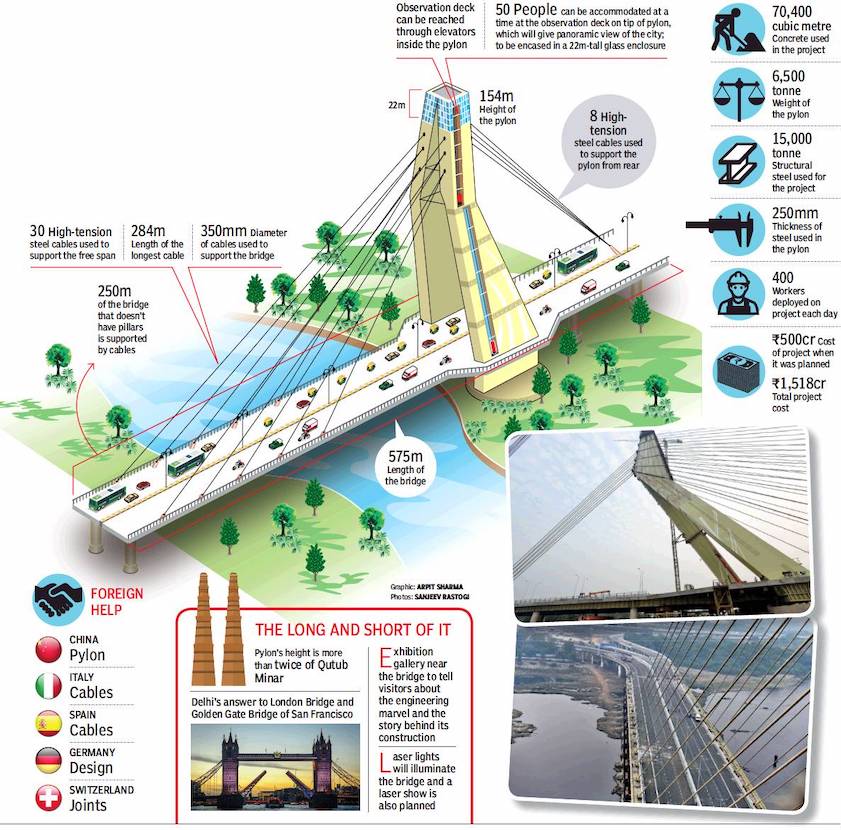Delhi: Signature Bridge
This is a collection of articles archived for the excellence of their content. |
Highlights, as when inaugurated/ 2018

From: Sidhartha Roy, Delhi’s tall order: 14-yr suspended animation ends in a namaste, November 3, 2018: The Times of India
Iconic Structure, Touted As New Symbol Of Capital, Will Give A Panoramic View Of City.
As you approach north Delhi’s Wazirabad on Outer Ring Road, there’s a thick haze obscuring the panorama. But you can still see the impressive structure of the Signature Bridge looming ahead. Fourteen years in the making, the much-delayed link between the two sides of the Yamuna will be inaugurated on Sunday, and people can start using it from the following day. Delhi government believes that its unique shape will forever be associated with the capital, as much as Qutub Minar or Lotus Temple, and become Delhi’s answer to London Bridge or San Francisco’s Golden Gate Bridge.
The pylon, shaped like a boomerang but more angular and among the tallest in Asia, distinguishes Signature Bridge from all others across the Yamuna. The cable-stayed structure, executed by the Delhi Tourism and Transportation Development Corporation (DTTDC), will reduce the distance between the areas on either side of the river from 45 minutes now to just 10 minutes.
“The pylon’s two legs rise in the shape of hands and meet in the middle in a ‘namaskar’. It is a way of greeting visitors,” a DTTDC official explained. The two inclined columns are rigidly connected to the driving lanes and bend midway. Its upper portion anchors the backstay cables and the main-span cables, arranged like in a harp. At the top is a 22-metre steel-glass structure that will permit a panoramic view of the city. Entry inside the pylon will be ticketed and facilitated through high-speed elevators. The first set of elevators, one each on the inclined legs will take visitors to the mid-section, from where they can take a vertical elevator to the top to get a bird’s-eye view of Delhi.
Apart from easing travel, the bridge is envisaged as a tourist attraction and the next phases will develop cafeterias, parking space and exhibition galleries. “Delhi hasn’t got a new iconic structure since the Lotus Temple in the 1980s and the state government felt the need for one,” said a DTTDC official. “The pylon design was conceptualised by a German firm and given shape by an Indian architect and was chosen from 15 shortlisted designs.”
Though DTTDC was awarded the project in 2004, actual construction of the approach roads began only in 2008 and of the bridge in 2010. Because the steel required by the design was not available in India, the pylon segments were fabricated in China and shipped to a port in Gujarat in 16 parts. It took two years for all the components to reach India.